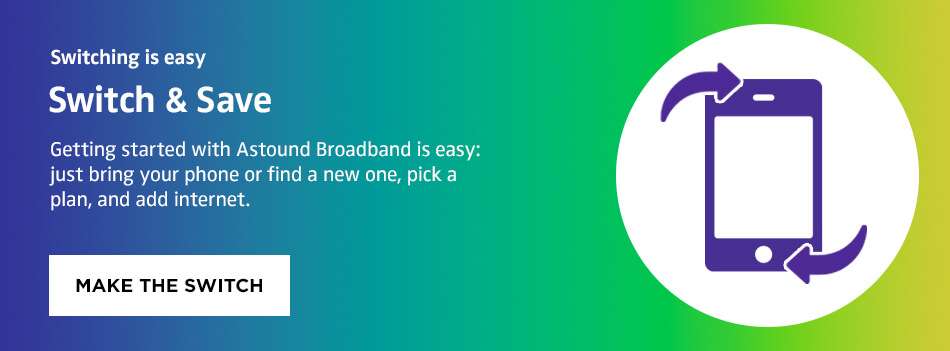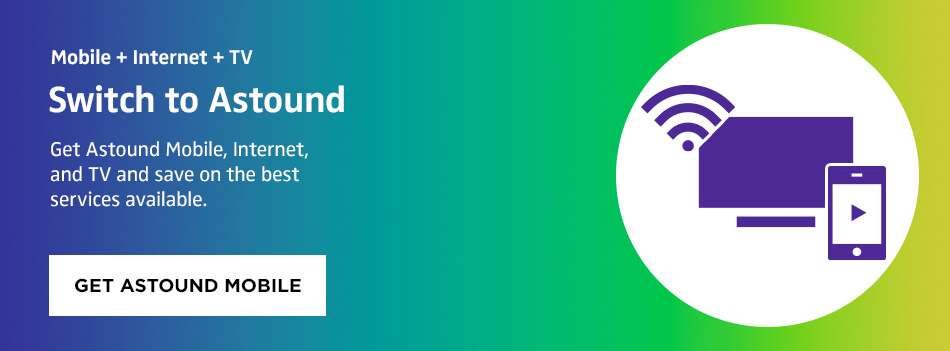5G vs. 4G: What's the difference?

As new generations of cellular technologies are released, each generation builds on the best attributes of its predecessors and succeeds in areas where previous generations couldn’t. 5G seeks to improve 4G network capabilities and surpass data speeds, latency, and density objectives.
In this article, you will learn about the two technologies, their differences, and the expectations and reality of 5G technology in mobile communication.
What is 5G?
5G is the fifth generation of cellular wireless technology.
It is designed to provide better network connectivity, lower latency, and faster internet speeds for mobile data than its predecessors.
5G operates on a high-frequency spectrum known as millimeter wave (mmWave), with 24 to 300 GHz wavelengths, allowing faster speed rates, higher network capacity, and lower latency.
5G utilizes innovative technologies like network slicing, beamforming, and massive Multiple Input Multiple Output (MIMO) to improve its capabilities while operating on higher frequency bands.
Network slicing
Network slicing involves dividing a single network into virtual networks tailored to specific use cases.
It gives each network slice its own resources, providing flexibility, efficiency, and customization.
Beamforming
Beamforming provides faster data rates, longer ranges, and improved coverage by directing radio waves in a specified direction while minimizing interference and noise from other directions.
Massive MIMO
5G employs massive MIMO through multiple antennas to deliver multiple data streams to different users in the same frequency band while reducing interference and power usage.
5G has potential peak data speeds of up to 20 Gbps and ultra-low latency of less than five milliseconds.
Such features can enhance the performance of business operations and other digital experiences such as:
- Real-time online gaming
- Videoconferencing
- Virtual reality
- Internet of Things (IoT) applications.
What is 4G?
4G is a fourth-generation wireless communication technology with excellent connection reliability and quicker internet speeds than its predecessor, 3G. 4G technology debuted in 2009 and became the worldwide mobile communication standard.
One of the key features of 4G is its ability to support high-bandwidth applications like HD video streaming, video calls, and online gaming.
The two major 4G standards are Long Term Evolution (LTE), adopted by several mobile network operators worldwide, and WiMAX, which was discontinued.
4G LTE can provide peak download speeds of up to 100 Mbps and upload speeds of 50 Mbps.
LTE boosts data transmission speeds and network effectiveness by utilizing cutting-edge methods like MIMO and Orthogonal Frequency Division Multiplexing (OFDM), which transmit data from a base station to multiple users at faster data rates with improved spectrum utilization.
4G LTE also supports voice over LTE (voLTE), which allows customers to make phone calls over the LTE network as data packets rather than traditional voice calls.
Using voLTE, you may send voice and data over the network at the same time without impacting voice quality.

5G vs. 4G: Comparing latency, speed, and bandwidth
4G vs. 5G latency
Latency is the most significant distinction between 4G and 5G.
Latency is the time it takes for data from your device to be uploaded and delivered to its destination, measured in milliseconds.
While 4G latency ranges from 60 to 98 milliseconds, 5G promises low latency of under five milliseconds.
Ultra-Reliable Low Latency Communication (URLLC) is a 5G use case that has the potential to support critical applications that require extremely low latency.
Real-time applications like online gaming, autonomous driving, and crucial Internet of Things applications like remote surgery depend heavily on 5G’s low latency to offer seamless connectivity.

4G vs. 5G speeds
The speeds of the two technologies may differ based on various factors, including network coverage, device capabilities, and network congestion.
In comparison to 4G, 5G networks are capable of substantially higher download and upload rates.
While 5G networks can provide peak download speeds of up to 20 Gbps, 4G networks offer maximum speeds close to 1 Gbps.

4G vs. 5G frequency
Compared to 4G, 5G technology uses higher frequency bands, enabling faster data transmission rates and lower latency.
4G operates on frequency bands between 700 MHz and 2500 MHz.
Because of the lower frequencies, carriers can deliver 4G/LTE signals in rural and remote areas.
Low-band
5G works with three frequency bands, including a low band with frequencies around 600 MHz to 700 MHz, to provide broad coverage over a large area.
Low-band is used commercially and privately to provide nationwide coverage and to assist enterprises in interacting with rural job sites.
Mid-band
Mid-band transmits around 1.7 GHz to 2.5 GHz, balancing network coverage and speed.
It is designed to cover broad areas spanning suburbs and cities.
High-band
The mmWave (high-band) operates at 24 GHz and higher, providing the fastest data speeds across short distances.
The combination of high data transfer rates and ultra-low latency enables devices to transmit vast quantities of data reliably in near real-time.
4G vs. 5G density
5G has a higher density than 4G, meaning 5G networks may support ten times more connected devices per square kilometer.
In a square kilometer of a 4G LTE network, around 100,000 devices can operate simultaneously.
These devices include smartwatches and mobile devices, all close to the same cell tower.
In contrast, a square kilometer of a 5G network can support 1 million active devices. 5G enables the widespread use of IoT devices, such as low-cost sensors, to be connected to the network.

5G expectations vs. reality
Before analyzing the differences between 4G and 5G for a specific network design, organizations should evaluate what 4G promised, what 4G provides, and what it may indicate for 5G’s reality.
For instance, according to the Global Mobile Suppliers Association, 4G LTE has been a worldwide success, connecting around two-thirds of cellular customers globally with over 6.6 billion subscriptions.
One objective of 4G was to achieve average speeds of 100 Mbps to 1 Gbps.
However, depending on your location, the network provider, and the type of device you use, actual 4G download speeds practically range from 7 Mbps to 50 Mbps.
These speeds do not imply that 4G’s initial objectives were false. Instead, these objectives lay the foundation for what 5G could achieve.
In this instance, the data speeds and low latency objectives of 5G expand 4G’s original objectives.
While 5G has the potential to improve operations, meeting expectations might take longer.
Providers may choose edge computing while waiting for 5G capabilities to materialize.
The fastest 5G networks are currently only available in large metropolitan areas because 5G networks need such a dense infrastructure.
According to Forbes, a more immediate application of 5G is network slicing, which enables multiple networks to coexist on a single dedicated infrastructure.
Network slicing is a significant departure from current approaches. It allows industries like transportation, healthcare, and IoT applications to benefit from customized data processing.
Despite this, 5G can improve operations and address the issues that 4G could not fix.
It remains to be seen how 5G does this on a long-term, global scale.
Dangers of 5G
Are health concerns valid?
All mobile network technologies emit electromagnetic radiation.
Some individuals are concerned this could have negative health impacts such as infertility or an increase in the risk of developing certain types of cancer.
The primary interaction between radiofrequency fields and the human body is tissue heating and the amount of radiofrequency radiation from modern devices does cause a slight increase in body temperature.
However, the World Health Organization (WHO) states that there is no proof 5G technology has any adverse health effects.
Security considerations
Security and regulations are essential considerations that must be acknowledged when implementing new technology.
For instance, the rising number of IoT devices connected to 5G networks expands the attack surface.
As more devices can connect, there will be billions of devices with varying levels of security, which means billions of potential breach sites.
IoT device security gaps could lead to widespread network intrusions and hacking.
Privacy practices
Privacy concerns for users revolve around location tracking, identification, and other personal information.
5G high-band frequencies have a much smaller coverage area than 4G bands. Hence, numerous smaller antennas and indoor and outdoor base stations are needed to support 5G networks.
According to Nokia, knowing which cell tower or antenna a mobile user connects with can help pinpoint their location.
Risks such as semantic information attacks, where incorrect information is used to harm users, or access point selection algorithms in 5G can leak a user’s location, putting them in harm’s way.

5G security and regulations
As the world increasingly relies on 5G networks for communication and data transmission, 5G security and regulations have become critical.
Many of the risks encountered in today’s 4G, 3G, and 2G networks are addressed by security measures built into 5G networks.
One of the essential assets in mobile networks is subscriber data.
This information includes communication data (voice, text, and data sessions) and subscriber-specific information such as identities, locations, subscription profiles, records, and signal traces.
All critical data must be safeguarded during its entire lifecycle.
It’s necessary to enforce secure encryption key handling as well as the usage of proper cryptographic algorithms and protocols.
Since the launch of 2G (GSM), mobile network technology has advanced following accepted international standards.

The standardization protocols guarantee the basis of best-practice solutions that are universally accepted, examined, and validated by industry experts.
According to Ericsson, 3GPP is the primary standardization organization for mobile networks, and the security group SA3 has defined security for 3G through 5G.
The GSMA states some of these controls include improved subscriber identity protection and new mutual authentication capabilities:
Mutual authentication
Mutual authentication ensures that the sender and receiver relationship is secure.
Subscriber identity protection
Subscriber identity protection includes features such as:
-
- Safeguarding initial non-access stratum (NAS) message confidentiality
- Introducing a home control mechanism for device authentication
- Spporting unified authentication across other access network types
- Introducing user plane integrity checking
- Enhancing privacy protection through the use of public/private key pairs
These security measures guard against man-in-the-middle attacks and attacks using fake base stations, stop roaming fraud, and guarantee that user traffic is not manipulated while in transit.
Frequently Asked Questions
What is 5G technology?
5G is the fifth generation of cellular technology. It is designed to improve the data speed rates, expand network capacities, and lower the latency levels of wireless networks to provide connectivity to more users and devices.
When will 4G be phased out?
The expansion of 5G networks does not imply that 4G will be phased out. Mobile operators will continue to provide cellular service to their customers using existing 4G LTE networks well into the next decade.
Where is 5G available?
On our website, you may enter your address or ZIP code to view coverage in your neighborhood using our interactive coverage map.
Will a 4G phone work on a 5G network?
To use 5G networks, you require a 5G-capable phone with 5G-enabled technology.
Will 5G work in 4G areas?
The current 5G phones on the market are “backward compatible,” which means they can operate on earlier-generation networks outside of 5G coverage zones.
What features are included with my Astound Mobile Service?
We have several options available to choose from, so you can select a plan that works best for your household. Options include:
- Unlimited talk and text
- Unlimited data plans
- Nationwide 5G/4G coverage
- WiFi calling
- No contract
- Mobile hotspot capability
- The ability to keep your phone and phone number
- Device financing (through third party)
Get Mobile + Internet Together
Find the mobile service, home internet and streaming that’s just right for you.
Astound Mobile requires Astound Internet service. Coverage not available in all areas. A trademark of Ziff Davis, LLC. Used under license. Reprinted with permission. Where available. © 2024 Ziff Davis, LLC. All Rights Reserved. All names, logos, images and service marks are property of their respective owners. ©2025 Radiate Hold Co., LLC d/b/a Astound Broadband. All rights reserved.
This website contains instructional information, including from third-party sources, and is intended, but cannot be guaranteed, to be always up-to-date, complete and accurate. Astound does not endorse, and is not responsible for, any third-party content that may be accessed through this website. Any representation or warranty by Astound that might be otherwise implied by information on this website is expressly disclaimed. Astound expressly disclaims all liability or responsibility with respect to actions taken or not taken based on any or all of the instructional information contained on this website. Astound does not warrant or guarantee the availability of any services at any specific time or geographic location or that services will be provided without interruption. Not all aspects of the Astound services function on all equipment and devices. Use of this website is subject to the Web Site Disclaimer and Web Content Accessibility Policy.



















